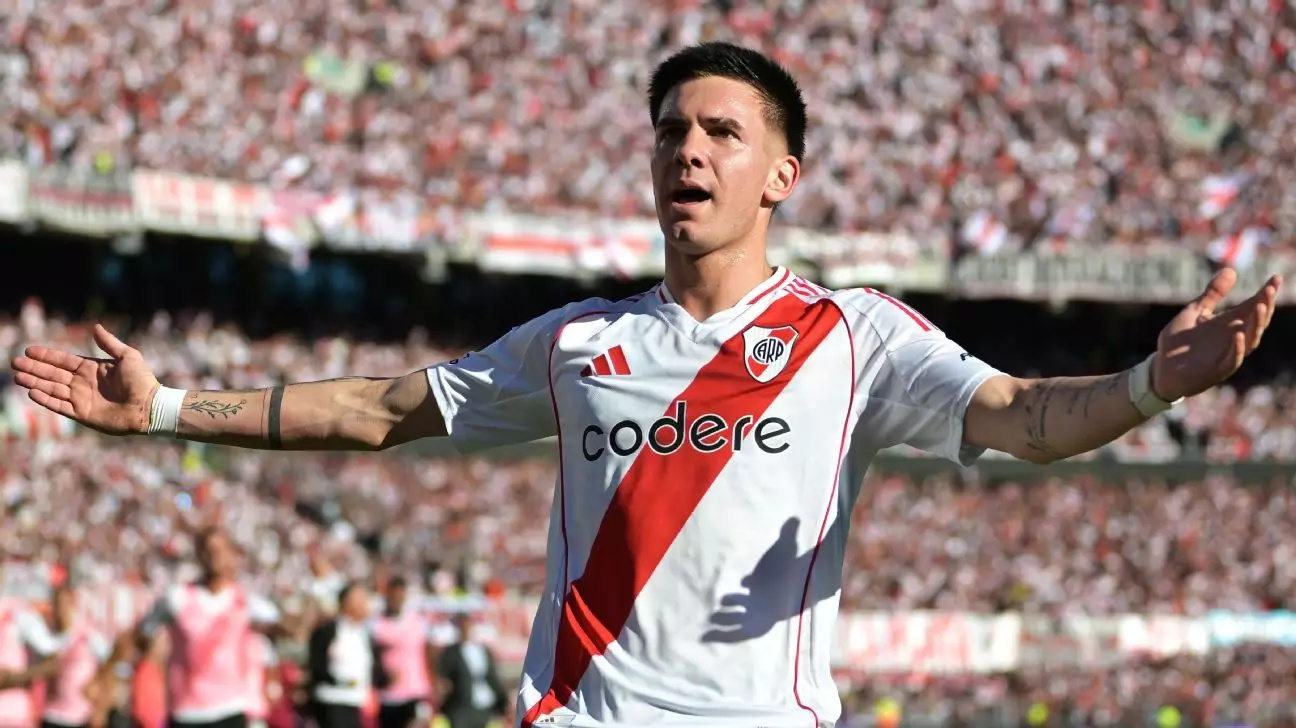In the fast-paced world of football, transfer rumors are as common as matchday excitement. The latest discussions revolve around potential deals for promising talents, with Real Madrid and Manchester United leading the charge for River Plate’s Franco Mastantuono. This attacking midfielder has recently marked his presence by becoming the youngest River Plate player to score against arch-rivals Boca Juniors, a feat achieved during the electrifying Superclásico. The 18-year-old’s release clause stands at €45 million, a price tag that reflects both his potential and the fierce competition expected for his signature. The fact that 17 European clubs, including heavyweights like Arsenal, Chelsea, and Liverpool, are eying Mastantuono highlights the high stakes of the current transfer window.
Such interest isn’t just a fleeting trend; it signifies a broader movement wherein clubs are willing to invest in youth prodigies rather than established stars, anticipating that their values will appreciate significantly over time. Mastantuono embodies this approach, illustrating how clubs are shifting towards nurturing homegrown talent to secure a stronger future.
Defensive Investments: Arsenal’s Attention on Huijsen
While exciting young attackers grab headlines, solidifying the backline is equally essential, and this is where Arsenal’s pursuit of Bournemouth’s Dean Huijsen comes into play. The Gunners are prepared to trigger Huijsen’s £50 million release clause amidst reported interest from rivals, including Chelsea and Liverpool. Here, Arsenal aims to address its defensive fragility, especially considering Newcastle’s recent withdrawal from the race for the 20-year-old, which could lead to a favorable situation for Mikel Arteta’s side.
Huijsen’s abilities at Bournemouth have already made a significant impression, showcasing the progression of English defenders in a league dominated by international stars. The emphasis on acquiring young, dynamic defenders like Huijsen points to a growing trend—teams are recognizing the importance of balance between youth and experience, with the intent of building a robust foundation that can propel them toward glory.
Crystal Palace’s Quandary: Key Players on the Move
Amidst the bustle of the transfer market, statements suggesting Crystal Palace’s readiness to offload Eberechi Eze have captured attention. Valued at £60 million, Eze has caught the eyes of numerous clubs such as Manchester United and Tottenham Hotspur. While parting ways with a star player can often indicate a club’s transitional phase, for Crystal Palace, it represents a more ambitious strategic overhaul.
Manager Oliver Glasner’s vision of rebuilding the squad is indicative of a willingness to adapt and evolve within the Premier League’s competitive landscape. Selling high-value players can provide the resources necessary to reinvest in talent, thereby crafting a stronger squad equipped to challenge for higher league placements.
The reality is that Crystal Palace isn’t just navigating financial necessity; they are reshaping their identity in a league where tactical evolution is crucial for success. It’s a bold move, one that could redefine the club’s direction narrative in a sport increasingly dominated by precise planning and execution.
Contract Negotiations: Retaining Talent as a Priority
As specific clubs prepare to transition, others are focusing on securing their stars. Liverpool’s intention to engage Luis Díaz in contract discussions underscores a broader theme of stability amidst uncertainty. With Díaz’s commendable contributions evident in his 12-goal season, the club seems intent on retaining talent that aligns with their long-term vision.
This trend of securing key players serves a dual purpose. Firstly, it ensures that clubs maintain their competitive edge while fostering loyalty among footballers. Moreover, it mitigates the risks associated with potential departures that could destabilize the entire squad. It’s an excellent strategy as clubs adjust to the shifting dynamics of modern football, wherein player poaching has become a common yet potentially destabilizing occurrence.
The Bigger Picture: Shifting Trends in Global Football
The current transfer window reflects a fascinating shift in footballing philosophy. Clubs are increasingly becoming acutely aware that nurturing talent can yield significantly better results than merely buying big names. They are willing to part with substantial amounts to acquire promising players, focusing on long-term investments that resonate with their promotional agendas.
From young attackers like Mastantuono to solid defenders like Huijsen, the current marketplace reveals that the landscape of football is transforming. The ongoing trend appears to harvest a blend of strategic foresight, investment in youth, and tactical adaptability that is likely to shape the sport for years to come.
The valuation strategies adopted during these negotiations serve as a testament to a broader understanding of player development alongside financial acumen. Each deal reflects a carefully orchestrated plan that takes into consideration not just immediate needs, but also the long-term aspirations of the clubs involved. With the transfer window fully underway, football fans are left to ponder the next chapter in this evolving story.

